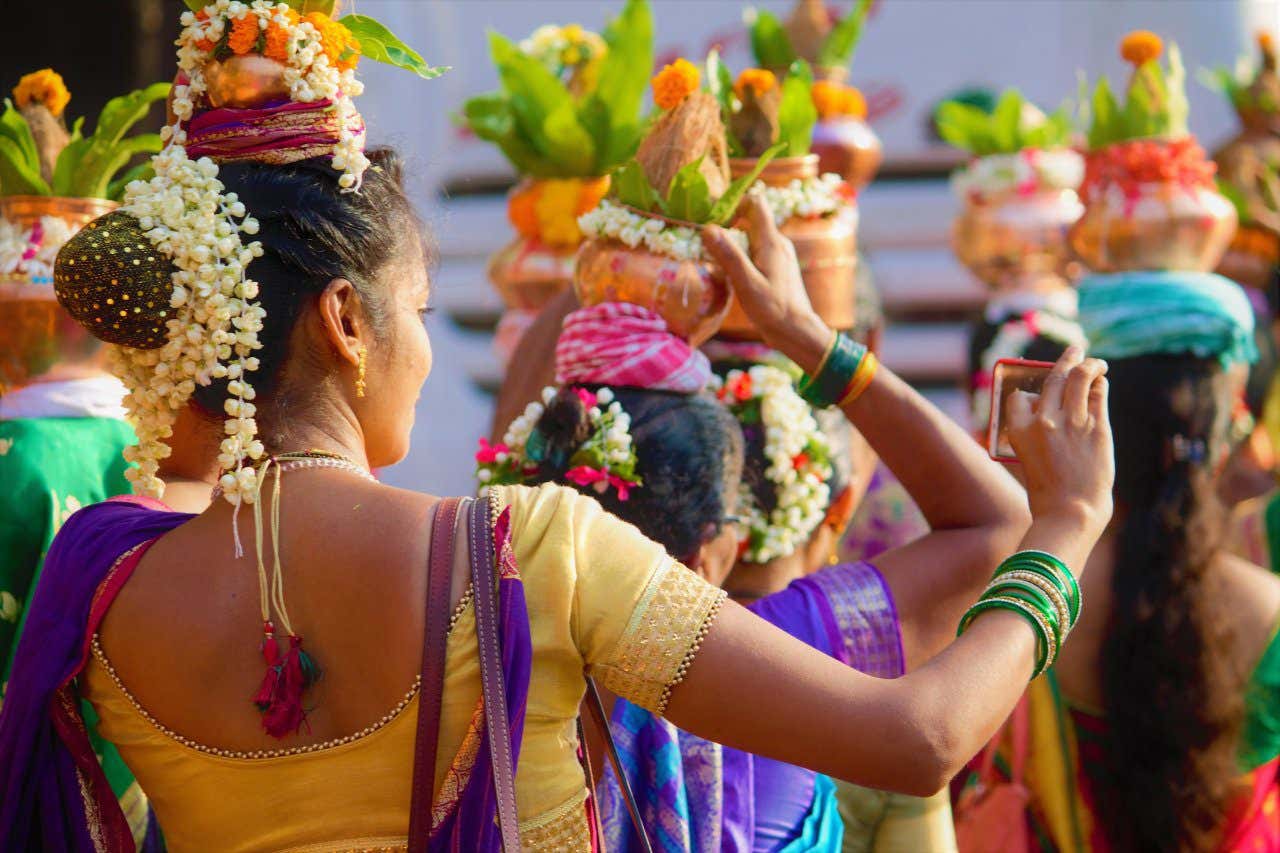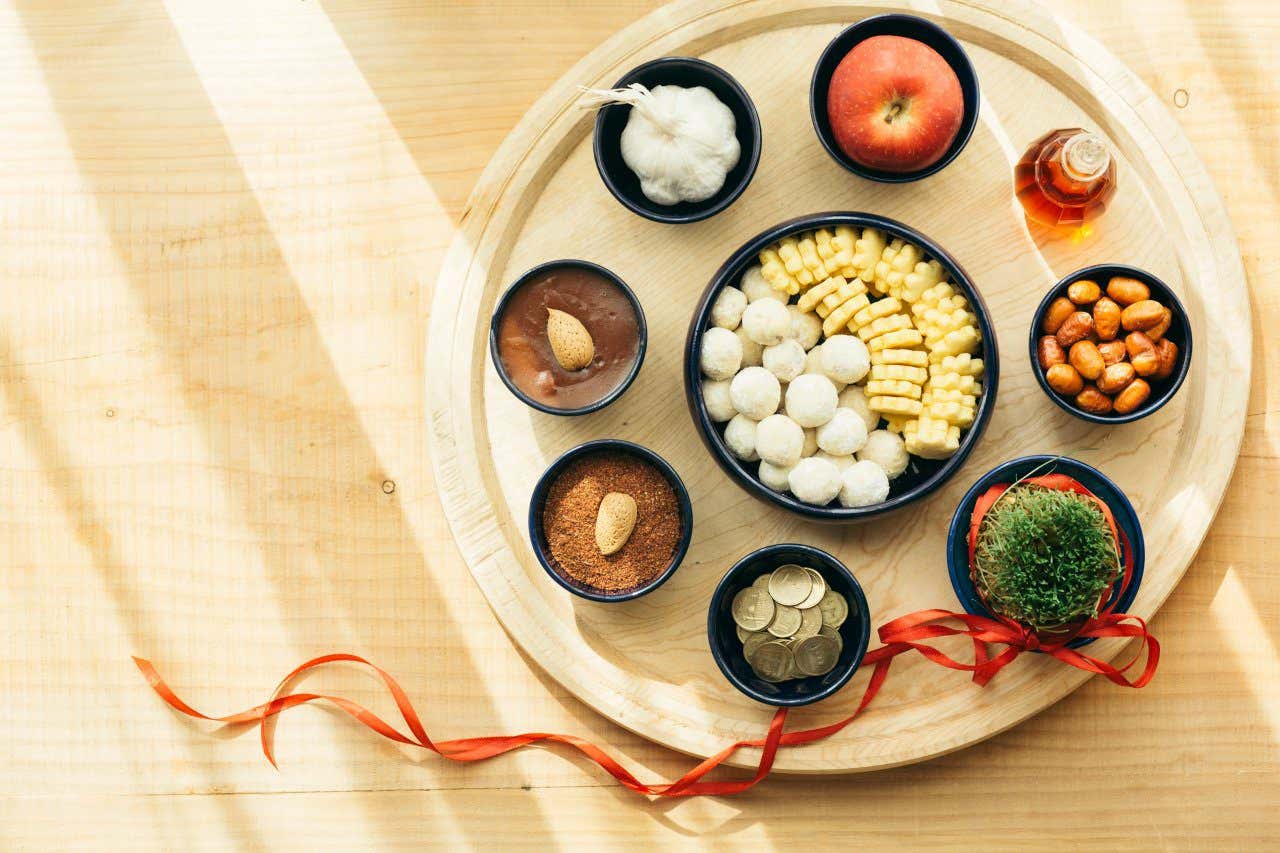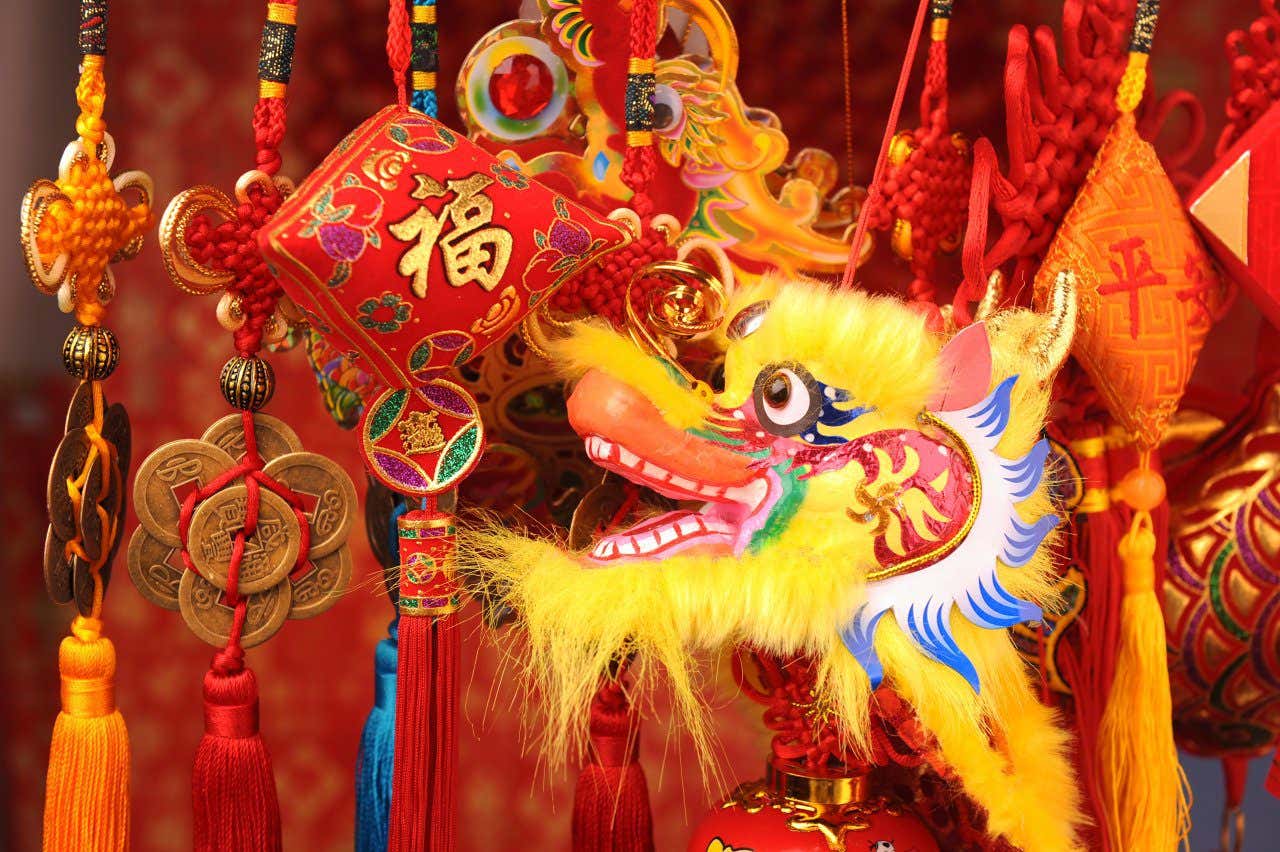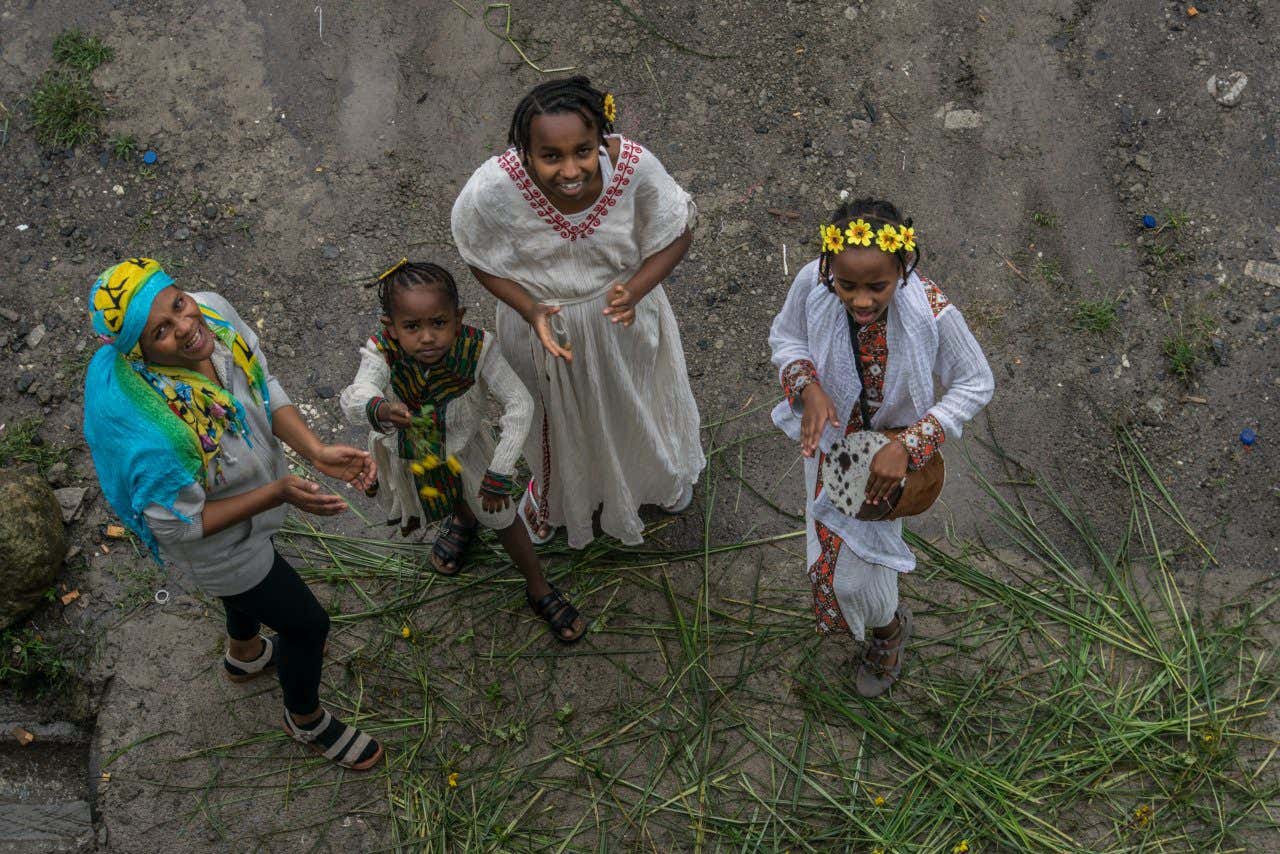10 Unique New Year’s Traditions Around the World

3, 2, 1… Happy New Year! We hope 2024 is an incredible year for you all. New Year is one of the most exciting dates of the year, and everyone’s got their own favorite way to bring in new beginnings. Here at Civitatis, we’ve gathered some of our favourite New Year’s traditions from around the world. From Colombia all the way to the Philippines, join us on a journey of the different ways people around the world ring in the new year!
India

Since India is so culturally diverse, every state has a different New Year festival that’s celebrated on a different day. Talk about an endless party! Here are just a few of them:
Ugadi, the Telgu and Kannada New Year, is celebrated on the first day of the first Hindu month Chaitra. In these states, they decorate their homes with mango leaves and marigold flowers. Ugadi Pachadi, a dish that contains 6 different flavors, symbolises various emotions of life and is a significant part of the New Year’s traditions.
Another is Rongali Bihu, a big spring festival held in Assam that lasts for several days. Men and women dress in traditional attire and cheerfully celebrate nature’s bounty with folk songs and Bihu dances!
Puthandu, the Tamil New Year, is celebrated on the first day of the Tamil month of Chittirai. The festivities begin with rangolis (colourful art believed to bring good luck and prosperity) and puja rituals (which include offering flowers to a deity or washing them) followed by a festive meal.
If you fancy experiencing any of these or other traditions, join us in India.
The Netherlands

Perhaps the most infamous New Year’s tradition in the Netherlands is taking a chilly dip in the sea! The tradition, called Nieuwjaarsduik or the Polar Bear Plunge, is believed to give a fresh start to the New Year. If you’d like to sign up for a bracing start to the New Year, the most well-known New Year’s dip occurs in Scheveningen.
And, of course, we have to mention Amsterdam’s crazy New Year’s Eve street parties! There are several party locations, including Rembrandtplein, Nieuwmarkt, and Leidseplein, but the one in Dam Square is certainly the craziest. At all of these locations you’ll find music, fireworks, beer tents, and oliebollen (oily balls). These deep-fried dough balls are believed to ward off evil spirits in the New Year, so they’re obviously a must!
Colombia

One of Colombia’s New Year’s Eve traditions is a favourite of ours since it’s all about travelling! On the 31st of December, many Colombians have a well-known superstition that has to do with their suitcases…
On this day, the locals take their suitcases out and about with them while running errands or on a walk around the block at some point during the day. This is believed to guarantee lots of travelling and adventures in the year to come. Cheers to that!
Iran

The people of Iran celebrate the Persian New Year, Nowruz, on the spring equinox. This spring celebration is filled with symbolism around rebirth and renewal.
One important tradition is the Haft Seen, a symbol of the 7 creations and the 7 holy immortals that protect them. The Haft Seen is made up of items that start with the letter “S.”. Usually, they are Seeb (apple), Sabze (green grass), Serke (vinegar), Samanoo (a dish made from wheat), Senjed (a kind of berry), Sekke (coin), and Seer (garlic). People might also grow seven seeds of wheatgrass as a reminder that this day is the 7th feast of creation. The seeds sprouting symbolise new growth and resurrection.
Another tradition is burning bonfires and jumping over them while singing a traditional song! Both the jumping and the song are seen as a symbol of purification and overcoming the challenges of the previous year, preparing you for the year to come.
Cambodia

Cambodia celebrates the New Year for 3 days in April at the end of their harvest season. On the first day, people light candles and burn incense sticks at shrines, paying homage to Buddha and praying for prosperity and serenity. For good luck, people will wash their faces with holy water in the morning, their chests at noon, and their feet in the evening before they go to bed. On the second day, people make offerings to the less fortunate. Families also attend a dedication ceremony for their ancestors. On the third day, people wash statues of Buddha or their elders, symbolising the washing away of bad actions and bringing good luck, happiness, and prosperity.
Other celebrations include playing traditional games and having a giant water fight in the streets! Nowadays, you can see crowds of people soaking each other with water guns, buckets, and water balloons. It may seem like madness, but it’s all rooted in religion, stemming from holy water cleansing!
Italy

If you’re after one of the more cathartic New Year’s Eve traditions, then you should head to Italy for the 31st of December. Across Italy, but in particular in Naples, people throw furniture out of their windows on New Year’s Eve!
The idea behind this activity is that, by throwing out your old furniture onto the street, you’re banishing bad memories from the previous year and welcoming a new start. But don’t worry, today many people only hurl soft items down to the ground!
China

In China, there are many traditions associated with the Lunar New Year, but do you know how these traditions began? According to legend, there was once a bloodthirsty creature called Nian, now the Chinese word for “year”, that preyed on villages every New Year. In order to scare off the beast, the villagers put red trimmings on their houses, burned bamboo, and made loud noises. The plan worked, and now the bright colors, lights, and loud noises associated with scaring off Nian have become a part of the New Year celebration!
This 15-day celebration centred around the home and family starts with people cleaning their houses to rid themselves of bad luck and start the New Year off right. Then, they decorate their homes with symbols of good luck and prosperity, including red couplets, Chinese coins tied with a red ribbon, red or gold mystic knots, and red Chinese lanterns.
Another popular custom is to give red envelopes filled with money to younger, single people as a symbol of good luck.
During the festivities, you’ll also see dragon dances and lots of firecrackers and fireworks; don’t plan on getting any peace and quiet during this time of year! Another popular event is the Lantern Festival, which is truly an incredible and enchanting sight!
Ecuador

If you take a trip to Ecuador for New Year’s Eve, get ready to see lots of fire! In Ecuador, people construct effigies of cultural icons, such as politicians and famous fictional characters, and then set them on fire. Many people will also fill their effigies with paper and old photographs.
As the paper maché effigies go up in flames, Ecuadorians say goodbye to painful memories and banish bad fortune. Some people will even go one step further and jump on the fire 12 times, once for each month of the year!
Ethiopia

In Ethiopia, the New Year, Enkutatash, is celebrated in September. One of the reasons Enkutatash is celebrated this month is derived from the Bible, which says that Heaven and Earth were created in September. This month is also a time of celebration because it’s the beginning of Spring, a symbol of the renewal of life. On the 22nd of September the the number of daylight hours and nighttime hours is exactly equal, making the month even more special!
New Year’s traditions include a group of girls going around to different houses singing the New Year’s song “Abebayehosh” and carrying yellow adey abeba flowers, a symbol of Spring in Ethiopia. People also burn ‘chibo’, a bundle of wood, and make a bonfire. They then sing and dance around it in celebration. At the end, they jump over the pit 3 times as a symbol of leaving the old year behind and ushering in the new one.
The Philippines

For many in the Philippines, round symbols represent luck. Therefore, lots of people seek out round objects on New Year’s Eve as good luck charms for the new year!
Popular examples of such objects are polka dots on clothing, setting out lots of circular fruits on the table, and even putting lots of coins in your pocket. By welcoming objects with this shape into your home on New Year’s Eve, you can bring luck and good fortune into your household!
From all of us here at Civitatis, we’d like to wish you a happy new year, wherever you are!






